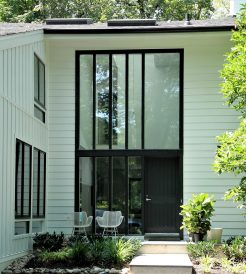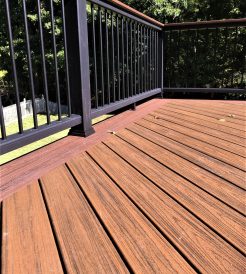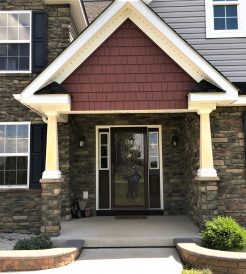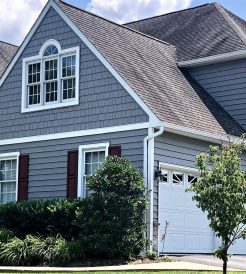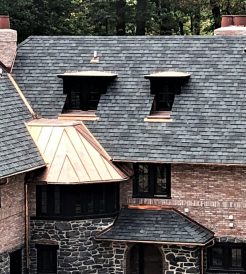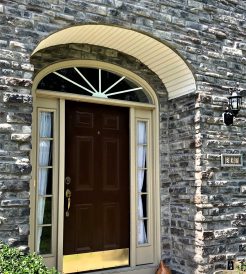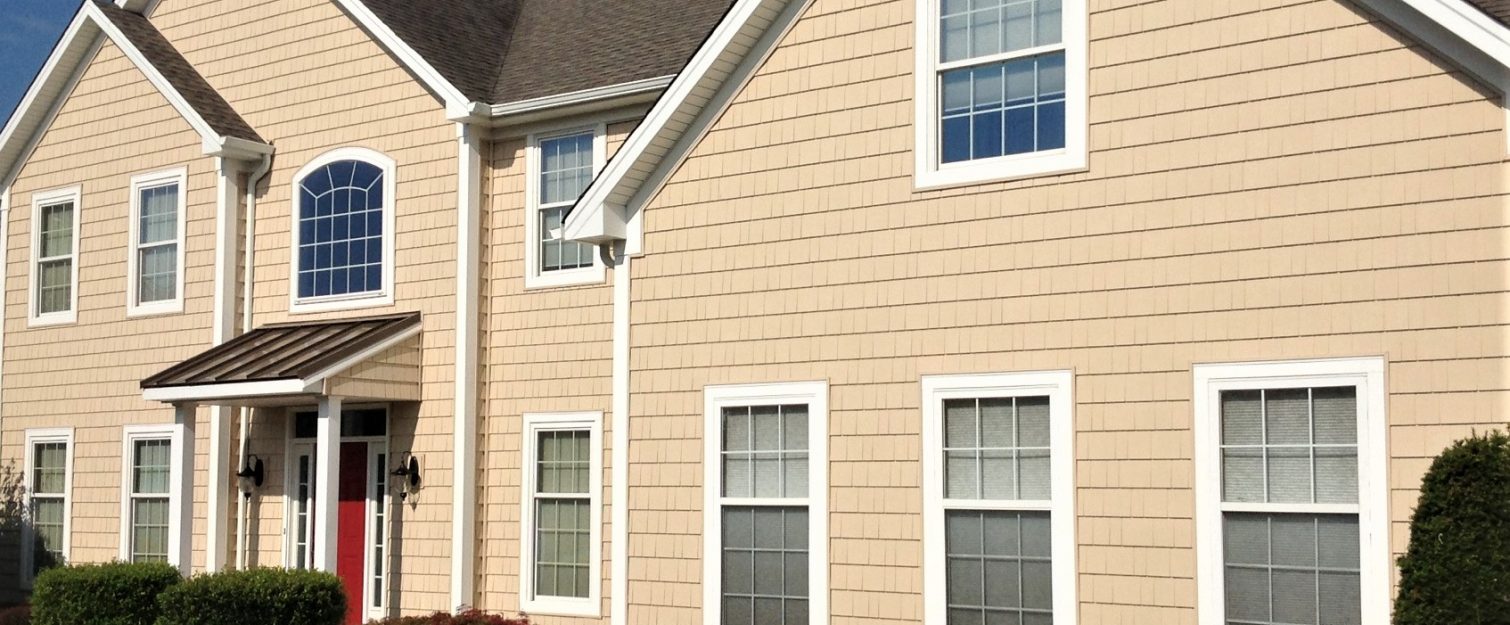The siding market has evolved, providing home builders a wide variety of options in different materials and colors. It’s even possible to combine a selection of siding options that compliment each other. This could be a way to reduce costs while achieving a unique design.
“From a functional point of view, siding gives you protection,” says architect Amy A. Alper. “From an architectural point of view, there’s an interest now in using a variety of materials to highlight special features on a home. For example, using stone or Western red cedar to highlight an entry.”
Don’t forget to consider your home energy needs, which can vary by location and climate. Certain siding selections offer more insulation, better cooling, maximum color retention, or more protection from elements in places prone to severe weather events.
Vinyl: Tried and True
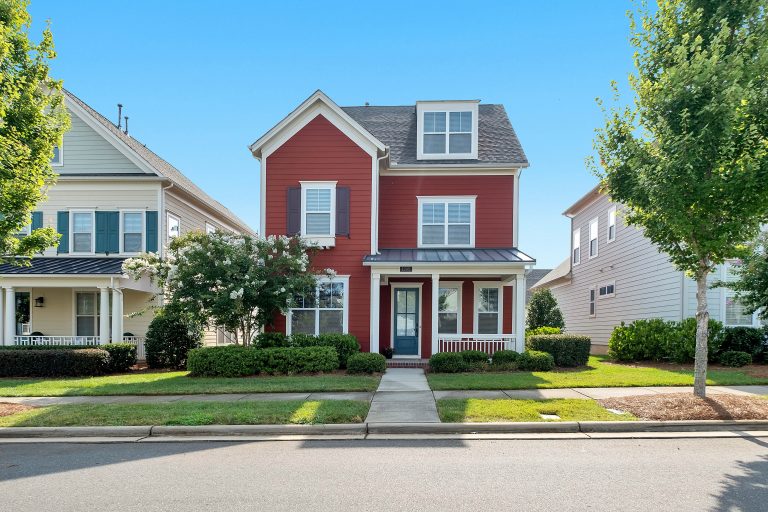
Tried and true, vinyl is the most widely used siding product among home builders – for good reason. One of the great benefits of vinyl is its customizable character, allowing you to find the perfect match to suit your overall aesthetic. And thanks to product advances in recent years, vinyl can give you the look of wood at a lower cost.
Not all siding manufacturers are made equal, though, so make sure to find a vendor who offers a high-performing premium quality product that protects against mold, moisture, and harsh weather elements.
Pros:
- Low-maintenance, with a wide range of custom colors and finishes
- Moisture and insect resistant
- Extremely durable, won’t rust or dent
- Widely used, so builders have a high level of proficiency in installation
- Reduces noise
Cons:
- Siding, especially dark colors, may fade in sunny climates
- Can come off in high winds if not correctly installed
- Cannot be patched; the entire plank must be replaced
- Improper installation may result in water buildup and damage behind the panels
Fiber Cement Siding: The Up and Comer
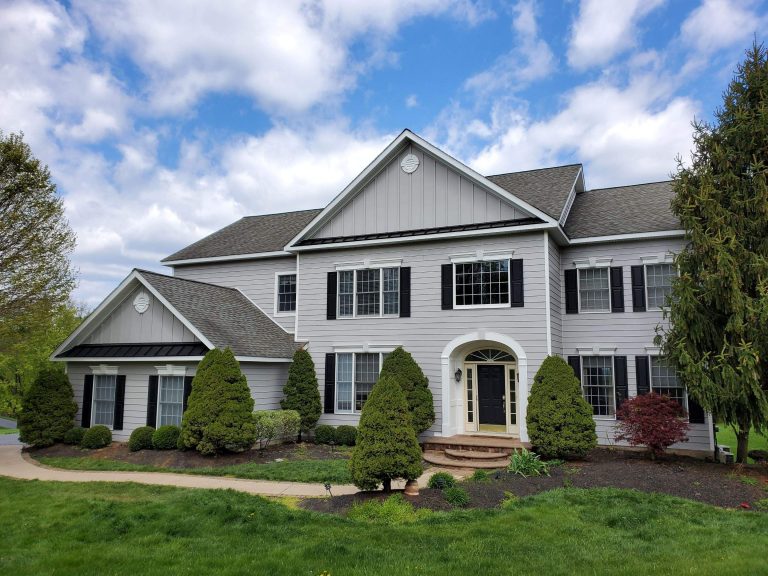
Want that wood clapboard look without all the maintenance? Fiber cement can be molded into shapes that mimic classic wood siding styles. This special feature is why you’ll often find fiber cement in historic home restorations.
Fiber cement siding is made of cement but can resemble wood clapboards or cedar siding, giving you the strength of the former and the curb appeal of the latter. Especially with it being insect, fire, and rot resistant.
Though home builders may shy away from higher upfront costs for material and installation, the low requirement for ongoing maintenance can offset the investment.
Pros:
- Extremely durable, can last up to 50 years
- Lower-maintenance than wood, but can offer the same look
- Easy to clean with a power washer, and can be repainted
- Resistant insects, mold, and fungus
- Eco-friendly
Cons:
- Requires highly skilled installation, so make sure to hire a professional
- More maintenance required must paint every 10-15 years then ongoing
- Less moisture-proof than other options
- Low energy-efficiency rating
- Higher installation cost
Wood: The Classic
It’s telling that many of the siding options in existence today emulate the characteristics of wood. Homeowners who love the natural qualities of wood, like the unique texture and scent, often can’t be swayed to try products that mimic the original.
The classic appeal is still widely sought-after, and selections come in various types of wood, including cypress, pine, spruce, and the popular cedar siding. Styles range from shingles, clapboard, board & batten, and even some engineered wood products. But wood comes with a maintenance commitment in order to preserve the quality. Homeowners often must plan for regular painting to prevent deterioration like rot.
Pros
- Can last for decades with proper care
- Custom siding styles and stain/paint colors
- Eco-friendly
- Enhanced curb appeal
- Increased Return on Investment
Cons
- Some wood grades are expensive, and wood siding can also cost more to install
- May need to be painted/stained as often as 3-5 years
- Must maintain to prevent moisture and insect damage
- Poor fire rating
In recent years, however, many wood siding lovers have begun opting for engineered wood siding. This type of siding allows homeowners to achieve the natural wood aesthetic without the maintenance and upkeep.
Siding is a crucial decision when building your home. From durability to aesthetics, you want to get it right. Don’t forget to review your neighborhood HOA restrictions regarding what materials you’re allowed to use for your home.
With all options, professional and quality installation is a must for optimal product performance. And good news! According to US News & World Report, new siding will recoup 75.6% of the cost when you sell your house.
Ready to replace your siding? Contact E&E Contracting today to schedule a consultation and we’ll help you decide what type of siding is right for you!
